Need
more
help?
Find answers to your questions about becoming an artist.
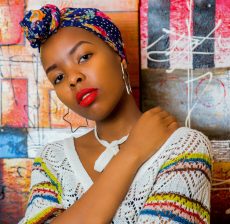
There’s only one way to get going and that’s simply to start creating.
Being an artist is all about ‘doing’ and gaining experience.
It calls on you to be bold…to have a go and produce things even if you’ve no clue as to what you’re doing.
Given this, expect to take a leap of faith even if you’re hesitant or feel unsure.
At this stage, don’t set your expectations too high. Just get to know your tools, play around with brush strokes or have a crack at doodling.
You then want to keep working at it, step-by-step. Keep trying, practicing and experimenting. If you do, your work will eventually grow into something meaningful.

As an artist, you have to pick an artistic medium with which to work.
It’s possible you might be drawn towards a specific style of art you have a natural interest in and enjoy. Popular artistic specialties include the following:
1. Painting, e.g. oil, acrylic, watercolour
2. Drawing
3. Sculpture
4. Calligraphy
5. Graphic design
6. Animation
7. Cartoons and illustrations
8. Pottery and ceramics
9. Woodwork and carpentry
10. Leatherwork
11. Handicrafts, e.g. paper crafts, candle work, jewellery making, basketry.
12. Textile art, e.g. weaving, knitting, embroidery, beading, sewing, quilting, crocheting.
In addition, some people like to explore mixed media art which entails combining multiple artistic mediums and materials.
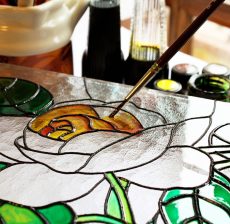
We love this question!
In a nutshell, a signature style entails creating a distinctive look and feel for your work. If you like, it’s that certain je ne sais quoi that makes your art recognisable and unique.
As a new artist, it can be daunting to find an artistic style that’s distinctively yours. If that’s you, don’t worry. Here are five tips to help you develop an individual style of your own.
- First up, keep creating art. It sounds cliché but common themes, styles, colour palettes and techniques are likely to arise the more you practice. Artistic styles often evolve from exploration and repetition. With each piece of art you produce, you will refine your craft, find your voice and develop certain artistic habits as part of your journey.
- Secondly, follow your interests and natural curiosities. Keep in mind that it’s not unusual to find inspiration from the world around you. If you love dogs, travel, people, sports or nature, you can use these passions as your inspiration. Be open to ideas that fire your imagination. Follow your interests and fascinations and see where they lead you.
- Thirdly is to experiment. Playing around with different ideas is a great way to discover new creative styles and techniques. Whilst experimenting, you might gravitate towards artistic preferences or notice reoccurring characteristics present in your art pieces. Experimentation could even unearth an inner perspective, a realisation or story behind your work.
- Fourth is to trust your instincts and focus on what you enjoy. Zoom in on the art forms and practices you love the most. Ask yourself, which media suits me best? What materials do I like to use? What feels the most natural fit for my talent and skills? You don’t have to persevere with an artistic direction or a technique that doesn’t inspire you. Struggles and imperfections are part of the experience. When they happen, don’t overthink things or beat yourself up. Push though floundering periods.
- Next is to keep learning and developing. Even once you’ve found an innate style specific to you, expect your creative voice to change and evolve with time. You will come across new ideas, stories and creative techniques that you’ll want to explore though your art. Finding your artistic style is a gradual process. Think of it more an evolutionary reflection of your personal progression, continued development and growth.

A body of work is a compilation of artworks that share consistent elements and features.
Let’s get visual and unpack this. If you visit an artist exhibit at a gallery, you may notice the true value of the experience often comes not from one art piece alone, but in how the works of art coherently present in their entirety. Perhaps the artist’s body of work collectively communicates a shared message or visual consistency.
Curating a cohesive ensemble relies on the creation of a body of work that embodies recurring characteristics and artistic qualities. To create a sense of unity, the art pieces that make up your body of work must have multiple elements in common, e.g.
- Stylistic theme
- Subject matter
- Visual style
- Artistic medium
- Creative technique
- Colour palette
It’s beneficial to have a shared connection between your art pieces because it makes your work more engaging and meaningful to your audience. If you can demonstrate a commitment to a particular theme or concept, you’re more likely to establish a deeper connection with onlookers.
What’s more, communicating with artistic intent strengthens your brand profile as it depicts a creative mastery and thoughtful exploration of topics and ideas that is significant if you’re seeking the recognition of galleries and collectors.
In truth, most artists over the course of their careers will develop a vast body of work spanning different artistic styles and creative mediums. Either way, having a cohesive body of work is an effective way to articulate purpose, portray consistency, grow interest and build a following.
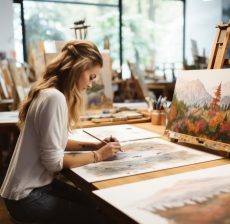
Attending art school is not a necessity to become an artist. In fact, many self-taught artists have flourished without any form of formal education.
That said, it does come down to individual preference and circumstance. The upside of going to art school is it can equip you with valuable skills, training, mentorship and networking opportunities that help set you up for the future. Some people like the inspiration, friendships, sense of community and shared experiences that come from attending classes.
As with anything, it’s essential to do your research to find a school that’s reputable. However, if art school isn’t for you, it’s absolutely fine to go down the teach yourself route. A good starting place is to look online as there’s a plethora of artistic channels and resources that are often free or economically more viable. In many ways, it’s comparable to attending art school without the exorbitant cost.
In turn, you can access how-to tutorials, watch art instruction videos, review critiques, join communities and group discussions. You can dive deeper into topics like how to start an art business and source good supplies or head over to YouTube where many artists share their experiences. All it takes to follow the independent path is a little motivation, self-discipline and to stick with it.

Showing off your artwork is a scary step.
However, you can ease yourself into exhibiting. To follow are ideas to get you started.
- The easiest way to get exhibiting is to host a viewing at home. What could be simpler than getting in a few easels and hanging your artwork on your walls? To recreate a gallery feel, set up a refreshment table to serve drinks, light canapés and snacks. If you wish to do so, you could offer your works of art for sale.
- Reach out to neighbourhood cafes and restaurants to ask if they’re willing to display your work. You may be able to bounce this idea off other local businesses like boutiques and small stores. Start off by approaching your network as it’s easier to begin with people that you know.
- As safety comes in numbers, could you team up with other emerging artists to put on a group show? First up, find a space to house your exhibition. You can then pool together to plan your guest list, produce marketing materials, publicise your event and share costs.
- Don’t forget local art markets and community spaces. Can you get your work on show at craft fairs, festivals, clubs, libraries or council offices? These events and venues are often open to supporting new artists. Moreover, they’re a great way to make new contacts and get into the local scene.
- Another suggestion is to approach an artist co-operative. All you have to do is apply for membership and if you’re accepted, the co-op may offer you a solo exhibition. Just as good, you could be invited to partake in a members show. As co-ops support the creative endeavours of budding artists, you might find opportunities to exhibit on a regular basis.
- Online art shows and virtual exhibitions have, in recent times, picked up in popularity. Choices include creating your own website and/or joining art platforms to showcase your work. Examples of online galleries include Artists & Illustrators Portfolio, Saatchi Art and Deviant Art. Use free platforms like Instagram and Pinterest to engage with the creative world.
- Have you heard of a juried exhibition? It’s a competitive exhibition where jurors evaluate an artist’s submitted work. Juried shows are worth considering as if your artwork is chosen, you can benefit from exposure, recognition, networking and monetary awards. Simply look out for calls for art and submit your artwork within the guidelines and deadlines of the show.
- It’s every artist’s dream to go from studio to gallery. That said, it’s better to apply to galleries once you’ve a proven sales record, client list and other exhibition experience. In the meantime, attend a gallery’s events to get to know the curator and what they like. Only apply at a later date if you feel your work is a good fit. Not only that, but look at other artists that are exhibiting at galleries that you like. For further inspiration, check out where these artists both show and sell.

Below is a go-to list of ways you can earn a living as an artist.
1. Sell your original artwork.
2. Turn your art into prints.
3. Create artistic merchandise like t-shirts, calendars, tote bags and mugs.
4. List on online market places.
5. Apply for art stipends and grants.
6. Enter art contests and competitions.
7. Exhibit at art shows and craft fairs.
8. Run an art blog.
9. Start a YouTube channel.
10. Write and publish art books.
11. Teach art classes and workshops.
12. Host an online course.
13. Set up a membership site offering exclusive content and offers.
14. Become a social media art influencer.
15. Hit the public speaker circuit.
16. Explore an art residency.
17. Accept artistic commissions.
18. Sign up for public art projects and mural open calls.
19. Launch a crowdfunding campaign.
20. Work as a gallery curator.
21. Offer freelance services.
22. Collaborate with other artists on joint initiatives.
23. Sell artwork images on stock websites.
24. Generate royalties from licensing your work to stationery, home decoration and fashion brands.
25. Partner synergistic businesses like interior designers, hotels, restaurants, film and TV production companies.
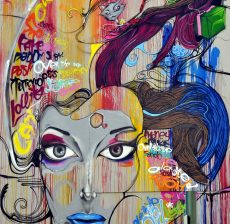
We totally get it. As budding artists, it’s not unusual to battle with confidence.
We worry that our work won’t make the grade or is unworthy. We’re afraid to face scrutiny and criticism. We become self-conscious, constantly questioning ourselves. What if people don’t like my work? What if I come across as amateur?
The great thing about art though is there is no right or wrong. Being creative is a form of self-expression for which everyone’s art is different.
Think of it this way. When an artist receives criticism it mostly derives from someone’s personal taste or individual opinion.
It’s why you must learn how to accept criticism. You have to know when to take on and improve from constructive feedback, versus when to ignore an unhelpful critique.
In part, you need to keep emotions in check and not allow subjective rhetoric to derail you. Instead, try to let go of the fear of not being good enough and trust your instincts.
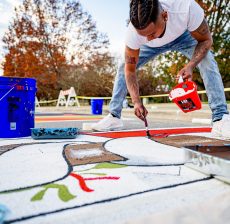
The aim of Art With a Heart is to nurture emerging artistic talent by offering resources and support to help those with a creative flair develop their artistic vision.
It’s not uncommon for new artists to grapple with self-doubt and artistic insecurities that can make them hesitant when it comes to progressing their ambitions.
Art With a Heart aims to share know-how and encouragement to enable you to explore your inner creativity whether you love to paint, draw, sculpt or design.

We’ve got your back.
Here’s some places and spaces to find more support and information.
You might also like our ‘Hit Lists.‘ They’re compilations of our favourite resources for artists from books and masterclasses to podcasts, supplies, gifts and much more.

